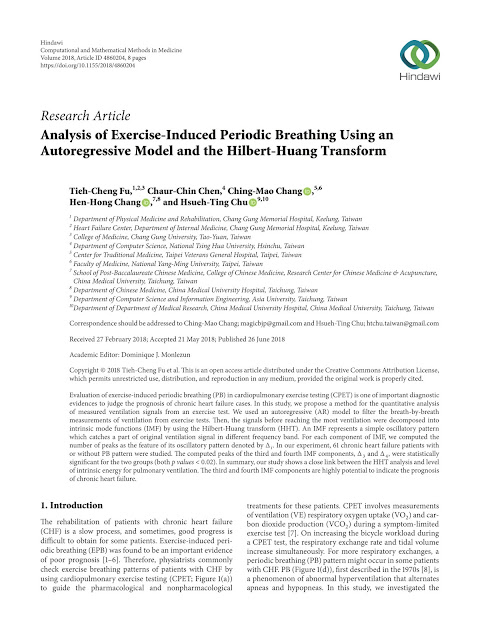 |
| Full text 全文下載 |
==============================================================
Comput Math Methods Med. 2018 Jun 26;2018:4860204. doi: 10.1155/2018/4860204. eCollection 2018.
Analysis of Exercise-Induced Periodic Breathing Using an Autoregressive Model and the Hilbert-Huang Transform.
Abstract
Evaluation of exercise-induced periodic breathing (PB) in cardiopulmonary exercise testing (CPET) is one of important diagnostic evidences to judge the prognosis of chronic heart failure cases. In this study, we propose a method for the quantitative analysis of measured ventilation signals from an exercise test. We used an autoregressive (AR) model to filter the breath-by-breath measurements of ventilation from exercise tests. Then, the signals before reaching the most ventilation were decomposed into intrinsic mode functions (IMF) by using the Hilbert-Huang transform (HHT). An IMF represents a simple oscillatory pattern which catches a part of original ventilation signal in different frequency band. For each component of IMF, we computed the number of peaks as the feature of its oscillatory pattern denoted by Δ i . In our experiment, 61 chronic heart failure patients with or without PB pattern were studied. The computed peaks of the third and fourth IMF components, Δ3 and Δ4, were statistically significant for the two groups (both p values < 0.02). In summary, our study shows a close link between the HHT analysis and level of intrinsic energy for pulmonary ventilation. The third and fourth IMF components are highly potential to indicate the prognosis of chronic heart failure.

沒有留言:
張貼留言
感謝您的寶貴意見,張清貿醫師